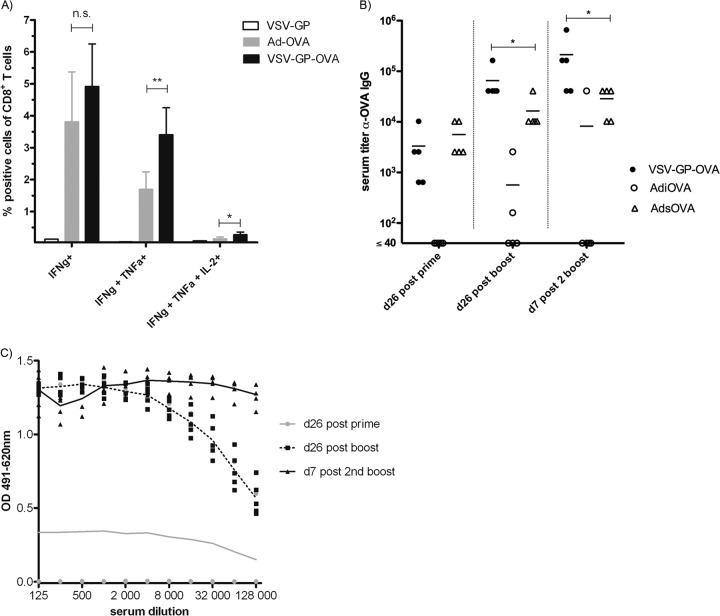FIG 5.
VSV-GP-OVA is at least as potent as a state-of-the-art adenoviral vaccine vector. Mice (n = 5) were immunized with VSV-GP-OVA, AdiOVA (expressing intracellular OVA), or AdsOva (expressing secreted OVA) in a prime/boost schedule with two boost immunizations. (A) Seven days after the second boost immunization, mice were sacrificed and splenocytes were harvested. Cells were stimulated with the OVA-specific CTL epitope SIINFEKL and analyzed by intracellular cytokine staining for production of IFN-γ, TNF-α, and IL-2. Means ± standard deviations for IFN-γ+, IFN-γ+/TNF-α+, and IFN-γ+/TNF-α+/IL-2+ cells within CD8+ T cell population are shown. Statistical significances were determined using an unpaired, two-tailed t test (**, P ≤ 0.01; *, P ≤ 0.05; n.s., not significant). (B) Plasma was collected at the indicated time points, and the titer of OVA-specific antibodies was determined by ELISA. Statistical significances were determined using nonparametric statistics (two-tailed, Mann-Whitney test; *, P ≤ 0.05). (C) Mice (n ≥ 4) were immunized with AdiOVA in a prime/boost schedule with two boost immunizations. Plasma was collected at indicated time points, and the titer of antiadenovirus antibodies was determined via ELISA.

